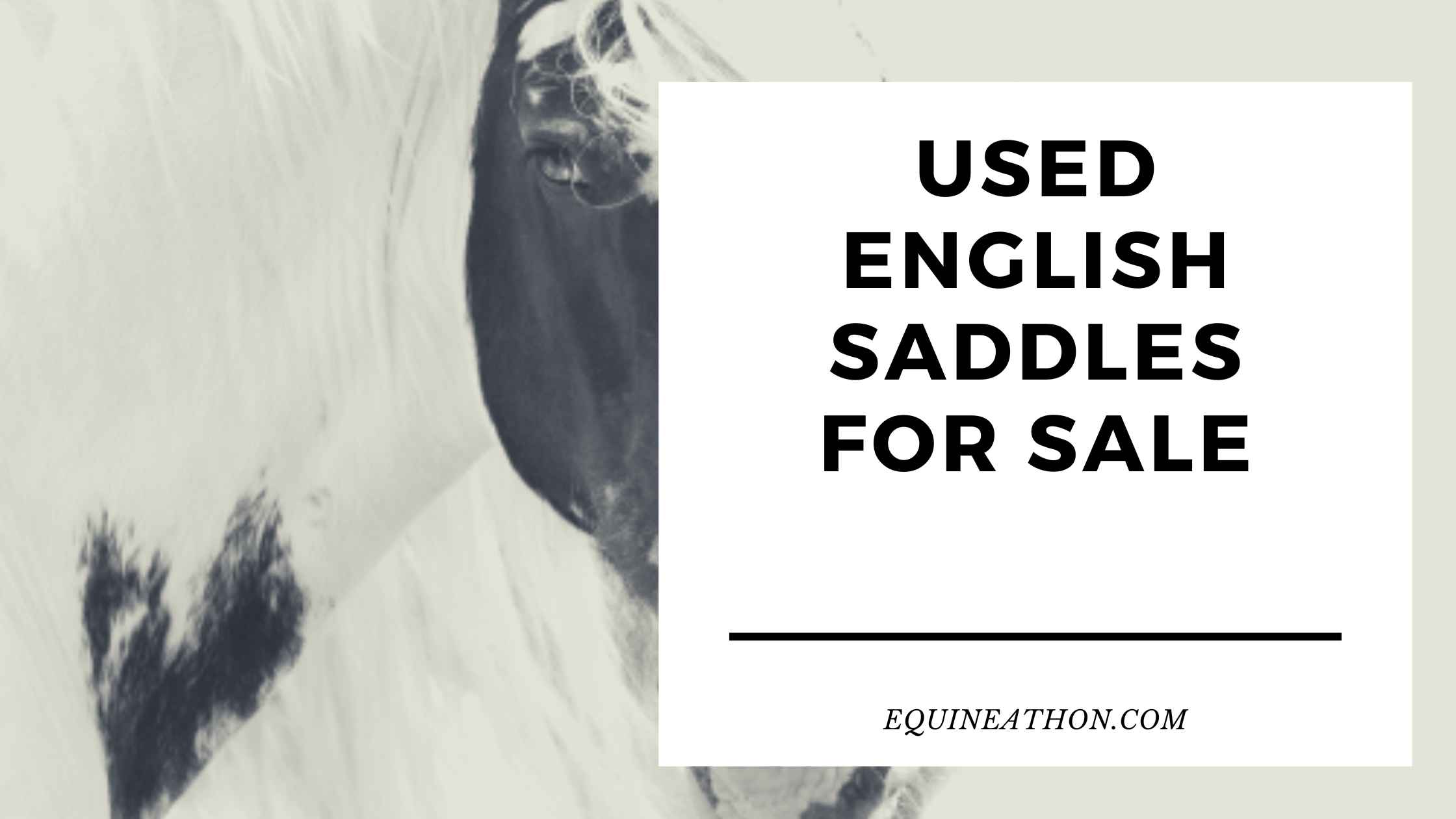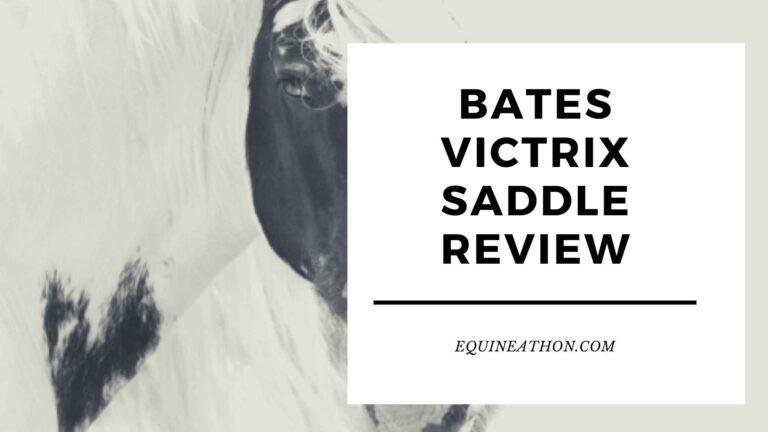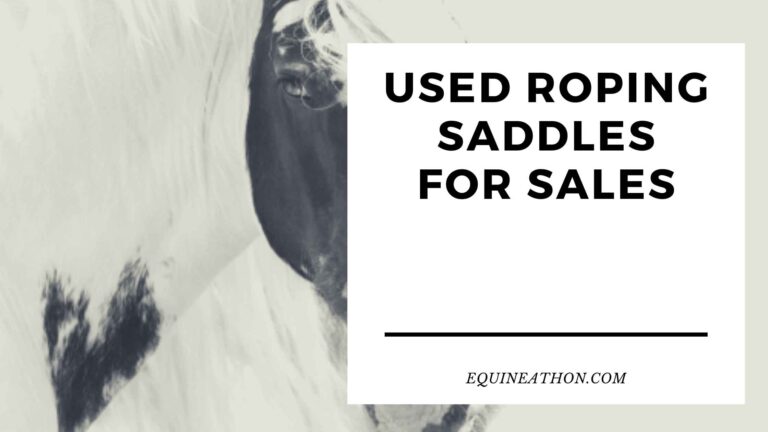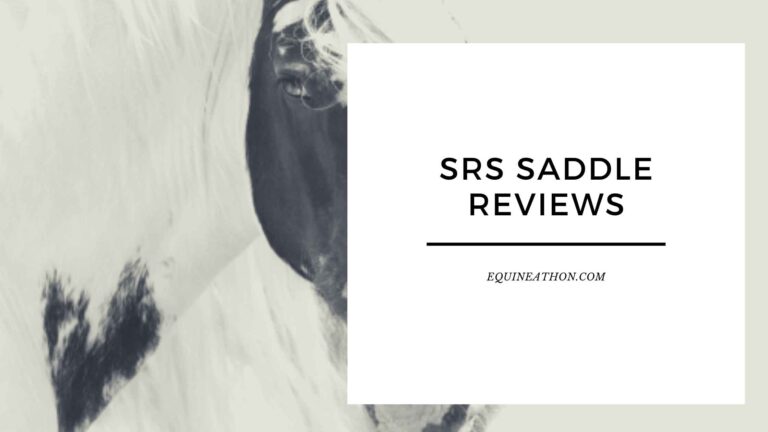Navigating the Market for Used English Saddles for Sale
Whether you’re a seasoned equestrian or a newbie in the riding world, there comes a time when you need to buy a saddle.
While many opt for brand-new equipment, the market for used English saddles is vast, offering both affordability and quality.
Here’s your ultimate guide to exploring and making an informed purchase.
Why Consider Used English Saddles?
- Economic Benefits: High-quality new English saddles can command steep prices. Opting for a used saddle can allow you to get a top-tier brand at a fraction of its original cost.
- Broken-In Feel: Unlike new saddles that require a break-in period, used saddles are often more comfortable from the get-go, molded by previous users and ready for immediate use.
- Eco-Friendly: Purchasing used saddles promotes reusability, reducing demand for new leather and materials.
- Rapid Availability: While custom new saddles can sometimes have long wait times, used saddles are usually ready for immediate sale and use.
Factors to Consider When Purchasing a Used English Saddle
- Purpose: Whether you’re into dressage, show jumping, or casual trail rides, ensure the saddle type aligns with your primary riding activity.
- Saddle Condition: Look for signs of excessive wear, damage, or compromised structural integrity. Minor cosmetic blemishes can be acceptable, but major faults can affect performance and safety.
- Size and Fit: Ensure the saddle fits both the rider and the horse. Check the seat size, tree width, and panel design. Remember, a poorly fitting saddle can cause discomfort and health issues for your horse.
- Brand and Model: Research popular and reputable saddle brands known for durability and comfort. Some renowned brands hold their value well, even when used.
- Age of the Saddle: While age isn’t always a determinant of quality, knowing how old a saddle is can give insights into its expected lifespan and potential need for repairs.
Where to Buy Used English Saddles
- Local Tack Shops: Many tack shops have bulletin boards with listings or even dedicated sections for used equipment.
- Online Platforms: Websites such as eBay, Facebook equestrian groups, and specialized equestrian sale sites often list used saddles.
- Equestrian Events: Attend local horse shows, rodeos, or equestrian events. Networking can lead to private sale opportunities.
- Consult a Trainer: If you’re taking riding lessons, your instructor may know of available saddles fitting your requirements.
Validating Authenticity and Condition
- Ask for Provenance: Understand the saddle’s history, previous ownership, and any modifications or repairs it underwent.
- Physical Inspection: If possible, physically inspect the saddle. Check for tears, cracks, loose stitching, or any signs of structural damage.
- Trial Period: Some sellers allow a trial period. Use this time to test the saddle’s fit and comfort for both the rider and the horse.
- Consult a Saddle Fitter: If unsure about the fit, consult a professional saddle fitter. They can provide invaluable insights and adjustments.
Final Thoughts
Purchasing a used English saddle can be both an economic and strategic choice for riders. It allows you to access high-quality equipment without the hefty price tag, and with the right research and diligence, you can find a saddle that serves you for many rides to come.
Always prioritize fit and safety, and don’t hesitate to tap into the vast equestrian community for advice and recommendations.
ALSO SEE: Vintage Dior Saddle Bag Review

FAQs on Used English Saddles
- Why would someone consider buying a used English saddle?
- There are several reasons, including economic benefits, a broken-in feel, ecological considerations, and immediate availability.
- Are used English saddles less expensive than new ones?
- Yes, used saddles can often be acquired at a fraction of the cost of their new counterparts.
- Do used saddles need a break-in period?
- Typically, no. Used saddles are usually already broken in and can be more comfortable from the start.
- Is buying a used saddle an eco-friendly option?
- Yes, purchasing used promotes reusability and reduces the demand for new leather and materials.
- Do I have to wait for a used saddle to be made or delivered?
- Generally, no. Unlike some custom new saddles, used saddles are often ready for immediate sale and use.
- How do I choose the right type of English saddle?
- Determine your primary riding activity, be it dressage, show jumping, or casual trail rides, and choose a saddle type that aligns with that.
- What should I inspect when checking a saddle’s condition?
- Look for signs of excessive wear, structural damage, and ensure there aren’t major faults affecting its performance.
- Does the brand matter when buying a used English saddle?
- Yes, certain reputable brands are known for their durability and comfort, and they can retain their value even when used.
- How can I determine a saddle’s age?
- Ask the seller about its history or check for any manufacturing labels or stamps that might indicate its production date.
- Where can I find used English saddles for sale?
- Options include local tack shops, online platforms, equestrian events, and consulting with trainers.
- Can I trust saddles listed on online platforms?
- While many genuine listings exist online, always exercise caution, request clear photos, and if possible, inspect the saddle physically before purchase.
- Is it beneficial to consult a riding trainer when buying a used saddle?
- Absolutely. A trainer might be aware of available saddles or can guide you on fit and brand suitability.
- What is provenance in the context of used saddles?
- It refers to the saddle’s history, previous ownership, and any modifications or repairs it might have undergone.
- Should I physically inspect a saddle before buying?
- Yes, if possible. This helps you check for any damages, tears, or structural issues.
- What if the seller doesn’t allow physical inspections due to distance or other reasons?
- Request detailed pictures, ask about a trial period, or consider if the seller has a return policy.
- What is a saddle trial period?
- Some sellers allow you to test the saddle for a set period to ensure it fits and meets your needs.
- Can adjustments be made to a used saddle if it doesn’t fit perfectly?
- Yes, consulting with a professional saddle fitter can help adjust and ensure a proper fit.
- Is there a difference between used saddles for dressage and jumping?
- Yes, saddles are designed differently based on the riding activity, ensuring the rider’s optimal position and horse’s comfort.
- Are there any risks to my horse if I use an ill-fitting saddle?
- Yes, a poorly fitting saddle can cause discomfort, pressure points, and potential health issues for your horse.
- Can I resell a used saddle if it doesn’t meet my needs?
- Yes, many platforms and tack shops offer resale options for used saddles.
- Are older used saddles of lesser quality?
- Not necessarily. The age of a saddle doesn’t always determine its quality, but it’s essential to check for damages or wear that might reduce its lifespan.
- How do I clean and maintain a used English saddle?
- Use saddle soap and leather conditioners regularly to keep the leather soft, supple, and in good condition.
- Will I receive a guarantee or warranty with a used saddle?
- Typically, used saddles don’t come with a manufacturer’s warranty, but some sellers might offer short-term guarantees.
- How do I know if a used saddle’s price is fair?
- Research similar saddles by brand, model, and condition to gauge average market prices.
- Can I get a used custom-made saddle?
- While the saddle was initially custom-made for someone else, you can find and purchase such saddles used.
- Is there a difference between men’s and women’s English saddles?
- While many saddles are unisex, there are design variations catering to the anatomical differences between male and female riders.
- What if I’m unsure about the type of English saddle I need?
- It’s beneficial to consult with experienced riders, trainers, or saddle fitters to guide your decision.
- Are used synthetic English saddles available?
- Yes, both leather and synthetic saddles can be found in the used market.
- Do I need to replace any parts of a used saddle?
- Depending on its condition, you might need to replace parts like stirrup leathers or billets.
- How do I measure a used saddle’s seat size?
- Use a measuring tape, starting from the nail or button at the side of the pommel to the center of the cantle.
- What are panels in the context of English saddles?
- Panels are the padded sections on the underside of the saddle that rest against the horse, providing cushioning and distributing the rider’s weight.
- Do all riders fit all brands of English saddles?
- No, individual preferences and body types mean that a brand or model might suit one rider but not another.
- How can I verify the authenticity of a high-end used English saddle brand?
- Look for brand stamps, labels, and consult with experts or the brand’s official representatives.
- Are there any hidden costs when buying used saddles?
- Besides the purchase price, consider potential shipping costs, fitting adjustments, or minor repairs.
- Do I need special tools to adjust a used saddle?
- For minor adjustments, no. But significant modifications might require professional tools or expertise.
- What’s the lifespan of a used English saddle?
- With proper care and maintenance, a quality saddle can last decades, even if it’s purchased used.
- Can I use a used English saddle for western riding?
- It’s not recommended. English and Western saddles are designed differently and serve distinct riding styles.
- How do I check the tree width of a used saddle?
- Measure the distance between the inside edges of the panels directly below the pommel. This measurement indicates the tree width.
- Is it essential to know the previous owner of a used saddle?
- While not crucial, knowing the previous owner or the saddle’s history can offer insights into its care and usage.
- Where can I learn more about different brands and models of English saddles?
- Equestrian forums, trainers, saddle fitters, and brand websites are excellent resources for research.







